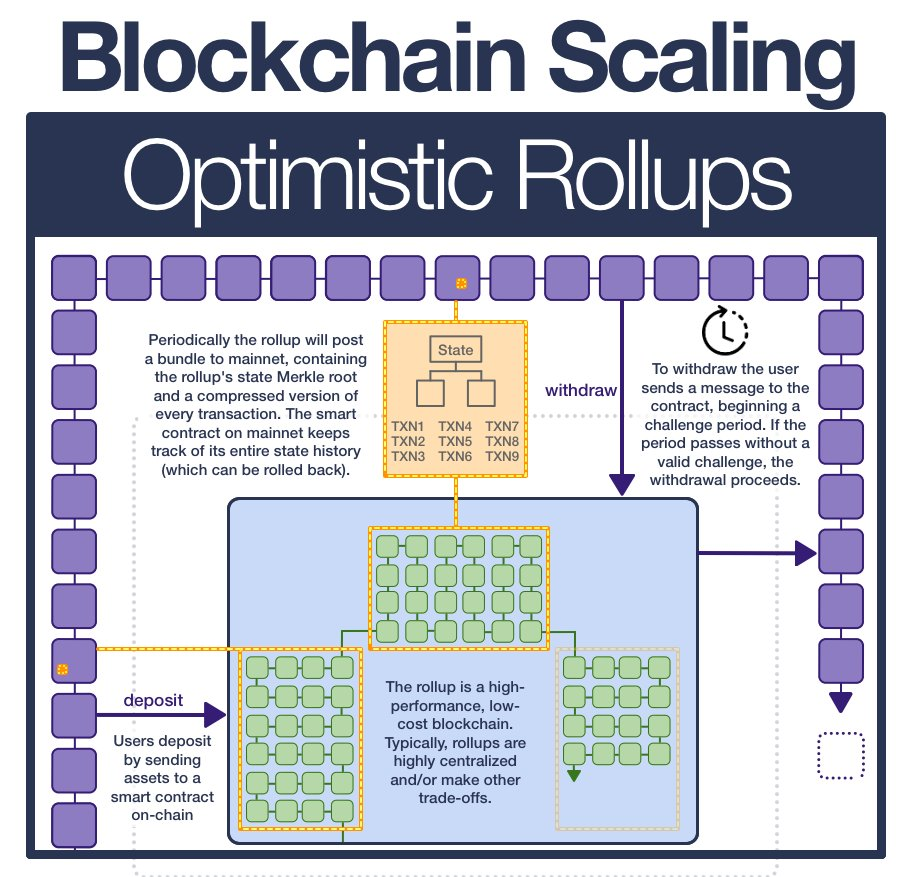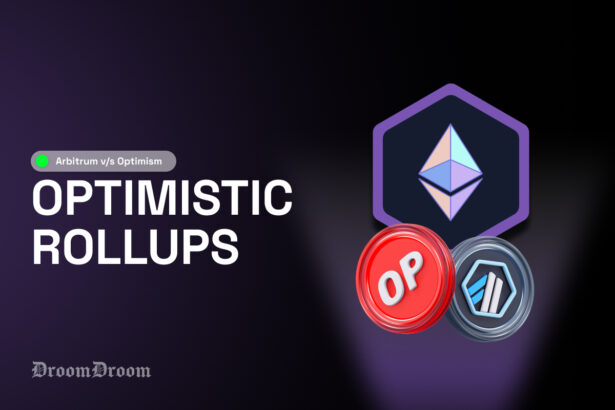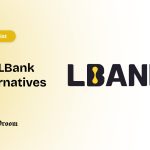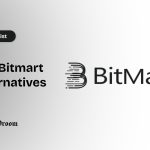There’s no doubt that Ethereum has brought tremendous uplifting to blockchain technology, establishing itself as the foundation for decentralized applications (dApps) and smart contracts.
However, with its growth, serious challenges have emerged—chief among them, scalability. High gas fees, slow transaction speeds, and network congestion are threatening to stall Ethereum’s progress.
Optimistic Rollups have emerged as a critical solution to these issues. Leading this innovation are Arbitrum and Optimism.
Optimistic Rollups, like Arbitrum and Optimism, are essential for boosting Ethereum’s scalability. They offload transaction processing from the mainnet, reducing congestion and lowering gas fees while still ensuring security through the underlying blockchain. By doing so, they not only solve critical issues like high costs and limited throughput but also support the growth and sustainability of Ethereum’s decentralized ecosystem.
If you’re wondering how these platforms work, why they’re important, and how they compare, you’re in the right place. Let’s break it down.
Why Do We Need Optimistic Rollups?

To appreciate what Optimistic Rollups bring to the table, you need to understand Ethereum’s core challenge. The network is incredibly secure and decentralized, but that security comes at a cost.
Every transaction must be processed sequentially to ensure the integrity of the blockchain, leading to significant bottlenecks. It’s like trying to drive every car in a city down a single-lane road—eventually, traffic builds up. Am I right?
Optimistic Rollups solve this by taking much of the heavy lifting off-chain, meaning transactions are processed elsewhere but are still anchored to Ethereum for security. By assuming transactions are valid (hence “optimistic”) unless proven otherwise through a mechanism called fraud proofs, these rollups can drastically increase transaction speeds and lower costs without sacrificing security.
Why is this important? Because without solutions like Optimistic Rollups, Ethereum’s growth could stagnate under its own weight. The introduction of these rollups has already led to a 10x increase in Total Value Locked (TVL) and a 200% boost in transaction speeds clearly they impact on the network’s scalability.
How Do Optimistic Rollups Work?
So, imagine you’re moving into a new apartment. You could carry each item yourself, making countless trips, or hire movers who load everything into one truck, significantly speeding up the process.
Optimistic Rollups are like the movers—they batch multiple transactions together and process them off-chain, reducing the strain on Ethereum’s main network.
Here’s the process in a nutshell—
- On-Chain Contracts: These are the smart contracts on Ethereum that hold the funds and monitor the state of the rollup. Think of them as the apartment manager who ensures everything is in order.
- Off-Chain Processing: This is where the real action happens. Transactions are executed in a separate virtual machine off-chain, which is faster and cheaper than doing it directly on Ethereum.
- Fraud Proofs: Validators keep an eye on things, ready to flag any fraudulent activity. If they find something fishy, they can challenge the transaction, and if they’re right, the state is rolled back, and the bad actor is penalized.
This system allows Optimistic Rollups to process more transactions at a fraction of the cost, making Ethereum more scalable without compromising on the security that users rely on.
Why Arbitrum and Optimism Matter
Now, let’s focus on the two heavyweights in the Optimistic Rollup arena, and they are (drumrolls!) Arbitrum and Optimism! Both aim to make Ethereum more scalable, but they approach the problem in slightly different ways.
Arbitrum: Scalability and Performance, Perfected
Arbitrum has quickly risen to prominence, and it’s not hard to see why. Developed by Offchain Labs, Arbitrum offers a platform where developers can deploy their Ethereum dApps with minimal modifications. It’s like upgrading to a faster car without having to learn how to drive all over again.
- Technical Superiority: Arbitrum uses its proprietary Arbitrum Virtual Machine (AVM), which is fully compatible with Ethereum’s infrastructure. This ensures that developers don’t have to start from scratch when migrating their applications.
- Performance and Efficiency: Arbitrum boasts up to 100 times the scalability of Ethereum’s base layer. By batching transactions and performing most of the computation off-chain, it reduces gas fees by up to 90%. You know this makes it a highly attractive option for dApps that need to process large volumes of transactions quickly.
- Security: Arbitrum’s fraud-proof mechanism is robust, relying on Ethereum’s security guarantees. In case of a dispute, a multi-round interactive proving system kicks in, ensuring disputes are resolved efficiently without burdening the main network.
- Ecosystem: Arbitrum has seen widespread adoption, especially in the DeFi space, with major players like Uniswap and OpenSea on board. This is a testament to its reliability and performance.
- First-Mover Advantage: As one of the earliest Optimistic Rollup solutions, Arbitrum has secured a significant lead in terms of TVL and developer adoption. The platform’s early adoption has allowed it to capture a large share of the market, with a significant portion of Ethereum’s on-chain activity now happening on Arbitrum.
- Impact of the Dencun Upgrade: The recent Dencun upgrade (EIP-4844) reduced transaction costs on Arbitrum by as much as 98%, further solidifying its position as a leader in the Layer-2 space.
Optimism: Flexibility and Innovation at the Core
Optimism is another powerhouse, but with a twist. Developed by OP Labs, Optimism is built on a modular and open-source development stack called the OP Stack. This allows for a level of customization that Arbitrum doesn’t quite match.
- Modular Architecture: The OP Stack enables developers to create custom Layer-2 solutions tailored to specific needs. It’s like building a car from the ground up, where every part is designed with a particular use case in mind. This modularity is part of Optimism’s broader vision of the “Superchain,” a network of interconnected Layer-2s that can scale horizontally.
- Performance and Cost Efficiency: Like Arbitrum, Optimism also reduces gas fees and increases transaction throughput by processing transactions off-chain. However, its focus on modularity allows developers to fine-tune their rollups for specific applications, potentially offering even greater efficiencies.
- Security Model: Optimism employs fraud proofs like Arbitrum but goes a step further by encouraging the use of multiple validators and sequencers. This reduces the risk of centralization and enhances the security of the network.
- Adoption: Optimism’s approach has resonated across various sectors, from DeFi to gaming. Projects like Uniswap, Aave, and Synthetix have already built on Optimism, attracted by its flexibility and the promise of the Superchain.
So, Arbitrum or Optimism? Which Is Right for You?
Here’s where the rubber meets the road. Both Arbitrum and Optimism offer compelling benefits, but the right choice depends on your project’s specific needs.
- Choose Arbitrum if you prioritize performance, ease of migration, and want a proven platform with broad adoption. It’s particularly strong in the DeFi space, where transaction speed and cost are critical.
- Opt for Optimism if you need a more customizable solution that can be tailored to specific use cases. Its modular approach and the vision of a Superchain make it ideal for projects that value flexibility and innovation.
Both platforms are solid, secure, and poised to play major roles in Ethereum’s future. The choice, well as it seems, ultimately comes down to what trade-offs you’re willing to make.
The Road Ahead for Ethereum Scaling
Arbitrum Optimistic Rollups and Optimism are leading the charge, offering different paths to the same destination—a more scalable, efficient, and user-friendly Ethereum.
If you’re in the market for a Layer-2 solution, the decision between Arbitrum and Optimism isn’t just about technology; it’s about aligning with the right vision for your project. Both are shaping the future of Ethereum in significant ways, and understanding their nuances will help you make an informed decision that’s right for your needs.



















